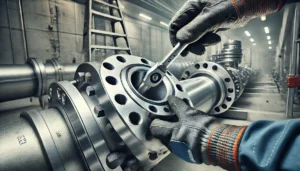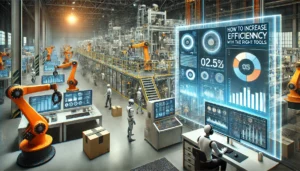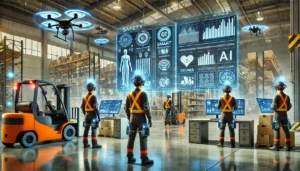The entire process of converting bespoke operational needs into tailored machinery which are then further used to fabricate machinery is a classic example of the term equipment. Each stage of this process is critical in the construction of the machinery that is accurately aligned with the requirement of the client.
1. Concept Development
The design work starts with an in-depth understanding of the needs and daily operational challenges that each client faces. Gathering and discussing these requirements in detail, assessing the level of feasibility, and brainstorming viable solutions is the first step of this process. These sessions that are specifically dedicated to the ideation of new methodologies are attended by multidisciplinary teams of engineers, designers and fabrication specialists. Before moving forward, benchmark experiments along with the primary research is carried out to validate the concepts.
2. Preliminary Design
This stage focuses on the specification of components and the rough shape of the equipment in its entirety. The initial stage of working upon the conceptual frameworks means that there is ample room to do initial research of component configurations as well as evaluating different vendors to determine optimal performance with a budget. The engineers first design the primary structure of the equipment. Then the CAD designers create the primary drafts of the models for the mechanical, electrical, and pneumatic systems for further analysis. A detailed electronic moleskine notebook is created with all the information that was gathered over the stage with a final review on the design to determine the direction in which the primary design will be.
3. Detailed Design
After the preliminary design review has been done, the detailed design stage is set to begin, and this means all components are specified to fill the mechanical, electrical, pneumatic, and hydraulic BOMs. The complete 3D CAD models of all fabricated and purchased parts are enhanced with additional details. The Electrical CAD drawings are provided with labelled wires indicating the circuits and the dimensions of the cabinets which were used for the assembly. Such detailing helps in ensuring that all aspects with regard to the equipment are properly planned prior to commencement of fabrication. Furthermore, simulations and virtual testing are carried out in order to detect possible flaws in the design which allows the engineers to perfect the system long before production begins.
4. Fabrication
As all designers are armed with detailed designs, the next stage of fabrication is underway. In-house fabrication facilities allow for custom equipment frames and tooling to be produced with speed. Skilled fabricators and welders ensure that laser cutters and press brakes are put to good use. This is important because for a business, the components need to be manufactured to the highest quality and this means guaranteeing that all custom designs are suitable for the client or industry with maximum reliability. The incorporation of advanced materials such as high strength alloys and composite materials is done so with careful consideration to achieve greater durability, weight reduction, and performance enhancement.
5. Assembly and Integration
The assembly phase is where all the pieces are fitted together while ensuring the mechanical, electrical, pneumatic, and hydraulic systems are integrated into a single piece. Competent technicians confirm the proper functioning of each system installed and its interrelationship with the other systems. This phase may also include designing custom operating software or human machine interfaces especially when the intended operator is not proficient with conventional gadgets. The equipment is made ready to be used by doing proper alignment, load testing, and initial calibrations.
6. Testing and Validation
Once the unit is ready for deployment, testing is done to check the assembled unit against the set requirements. Factory Acceptance Testing or FAT is part of the activity done during this phase to ensure that the assembled equipment can operate within set limits of the normal working environment. These activities include determining upper and lower limits for each system, calibration, mechanical load, and active fault simulation. Every problem encountered is solved to ensure that the assembled unit meets the set performance, safety, and operational requirements. At this stage, documentation is prepared as guides to maintenance and troubleshooting in the future.
7. Installation and Commissioning
After the required tests have been done, the client’s equipment is installed at the customer’s location. The engineers, operators, and facility managers collaborate with the experienced technicians to obtain proper layout and ensure amusement. There is a Site Acceptance Testing (SAT) conducted and it establishes proper usage of the equipment in a defined working condition and satisfactory need is obtained. Adjustments or software changes are carried out on site to enable effective operation of the system under the conditions for the system.
8. Training and Support
Thorough training is given to the client’s staff for effective operation and maintenance of the equipment and other actionable devices. This covers the operational instructions, safety measures, and corrective action procedures phrased as how to deal with faults. During the initial operation periods, assistance for any issues that might arise together with maintenance servicing is done. For modernization, remote monitoring, predictive maintenance, and technical assistance service programs are incorporated for enhanced efficiency.
9. Continuous Improvement and Upgrades
All custom industries are built with future expansion potential. As business growth occurs, modifications or updates may be necessary. Periodic reviews of performance assist in pinpointing areas where improvements can be made so that all equipment changes are up to date while still conforming to industry standards. Modular designs make it easier to shift a company’s production capabilities which, in turn, reduces the time and money spent on replacing obsolete machines.
Conclusion
The communication and coordination between the client and the manufacturer of the equipment is of utmost importance. By following these structured steps, it is possible to create bespoke pieces of equipment that operate on specific processes, work more efficiently, productively, and competitively. The ability to tailor solutions precisely to an industry’s requirements not only improves overall workflow but also leads to cost savings, sustainability, and long-term operational success. With the constant progress in automation, AI, and smart manufacturing, the future of bespoke industrial equipment is guaranteed to be more efficient and comfortable for industries globally.










